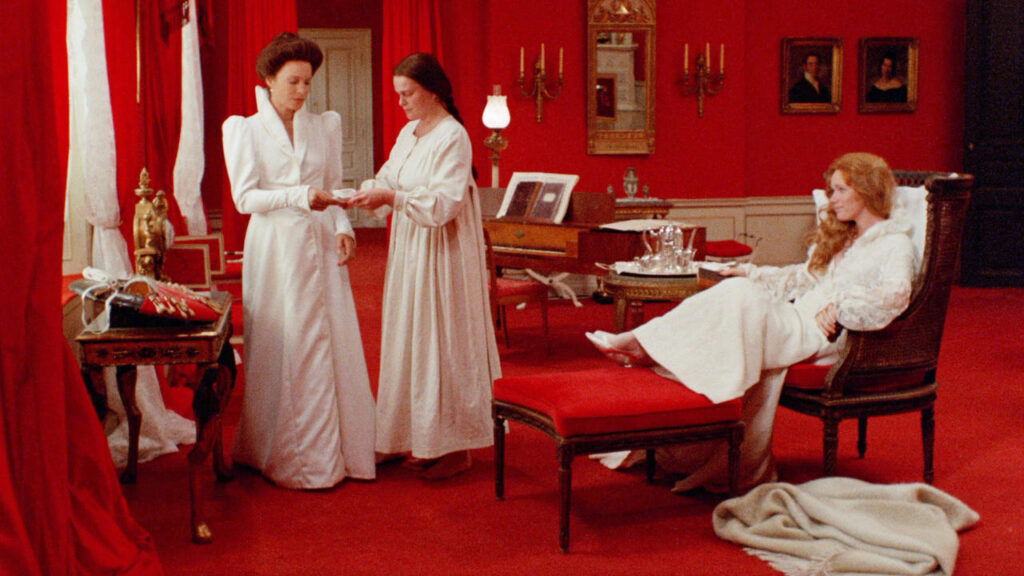Written and directed by Ingmar Bergman
I’m going to pick 13 movies. They may be an influence on my writing, on my filmmaking, or on my thinking. They may just be movies I like. There may be more than 13.
There are only three colors in Cries and Whispers. The women wear white. The men wear black. And they are surrounded by red.
There is a lot of red. The walls of the mansion are red. The drawn blood from acts of violence is red. And red drapes the interludes where the titular whispers accuse the characters as they face the audience—whispers, it can be said, that emanate from the audience.
The story revolves around a death. Agnes is slowly and painfully expiring. Her sisters Maria and Karin dutifully come to be with her in her last days, but it is the maid Anna who provides the only love Agnes knows. Anna is a simple woman—single, deeply religious, and devoted to Agnes. Maria and Karin are the opposite—selfish and prone to dissolute behavior. Maria is forced to remember her adulterous affair with Agnes’ doctor, which caused her husband to stab himself. Karin cut her own genitals with glass to avoid sex with her husband. Even though they no longer live in this sprawling house, we sense the red walls are their doing.
Cries and Whispers effectively establishes the fears of its characters and then manifests them, taking us along for a harrowing ride. Maria and Karin (along with the men) are unfeeling. They are dead in soul, even as they are healthy in body. They are repulsed by their dying sister. In a nightmarish fantasy sequence, the dead Agnes re-animates, clawing at the air and moaning dreadfully. Maria and Karin recoil, but the faithful Anna wraps her arms around the tortured Agnes, soothing her back into quiescence.
Sound lays the foundation of the unease in Cries and Whispers. When Agnes swallows, we hear it loudly on the soundtrack and feel the pain. Her croaking groans carry as much or more agony. The clock ticks ominously. In this country estate, there is little background noise. There is only the sound of impending death.
There’s no getting around it—Cries and Whispers is a horror film. There are no creatures, little gore, and zero jump scares. But like the best horror movies (David Cronenberg’s Dead Ringers come to mind), Bergman’s film explores the corruption of the mind—or in this case, the soul. The Swedish auteur said he imagined the soul as a blood-red membrane. So this house is an encapsulation of the soul. For this son of a Lutheran pastor, the soul is a broken, dying organ in desperate need of healing. Where is this healing? For Anna and Agnes, the soul can be repaired only through Christ. Karin and Maria aren’t so sure. They have their memories, including the hopeful one which ends the movie. But they are dead, and the dead cannot save themselves. To be trapped inside a broken, blood-red soul is too much horror for a person to endure. Is it any wonder they have abandoned all feeling?

